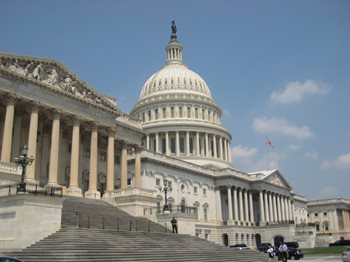Federal Infrastructure Investment and Jobs Act

Congress created Metropolitan Planning Organizations (MPOs) such as the NJTPA, to give local elected officials a stronger role in guiding federal transportation investment and to ensure that these decisions are based on a continuing, cooperative and comprehensive (“3C”) planning process.
Congress first required the creation of MPOs in urbanized areas in the Federal-Aid Highway Act of 1962, but granted them little power. In 1991, the federal Intermodal Surface Transportation Efficiency Act (ISTEA) greatly enhanced the authority of MPOs. ISTEA required MPO approval for allocating federal funding for many types of highway and transit projects (see MPO History publication).
Congress has continued to support planning by the 400 MPOs across the country in subsequent transportation reauthorization laws. The latest reauthorization is the Infrastructure Investment and Jobs Act (IIJA) signed into law on November 15, 2021. It succeeds Fixing America’s Surface Transportation (FAST) Act, originally enacted in 2015. A separate webpage provides information and updates about funding opportunties available throught the Act
The National Association of Regional Councils has prepared a summary of the law's provisions. Among the benefits of the IIJA to New Jersey according to the USDOT:
- Repair and rebuild roads and bridges with a focus on climate change mitigation, resilience, equity, and safety for all users, including cyclists and pedestrians. Based on formula funding alone, New Jersey would expect to receive approximately $8 billion over five years in Federal highway formula funding for highways and bridges.
- Improve the safety of our transportation system. The law invests $13 billion over the Fixing America’s Surface Transportation (FAST) Act levels directly into improving roadway safety.
- Improve healthy, sustainable transportation options for millions of Americans. Based on formula funding alone, New Jersey would expect to receive about $4.5 billion over five years under the law to improve public transportation options across the state. In the first year, this represents about a 37% increase over 2021 FAST Act formula transit funding levels.
- Build a network of EV chargers to facilitate long-distance travel and provide convenient charging options. New Jersey would expect to receive about $104 million over five years to support the expansion of an EV charging network in the state. New Jersey will also have the opportunity to apply for grants out of the $2.5 billion available for EV charging.
- Modernize and expand passenger rail and improve freight rail efficiency and safety. The law includes $66 billion above baseline to eliminate the Amtrak maintenance backlog and modernize the Northeast Corridor.
- Improve our nation’s airports. Under the law, airports in New Jersey would receive approximately $272 million for infrastructure development for airports over five years
- State and local governments can look forward to these new & expanded competitive grant programs in the Bipartisan Infrastructure Law (BIL) anticipated to launch over the course of the next year:
- Federal Transit Administration (FTA) Low and No Emission Bus Programs ($5.6B, expanded)
- FTA Buses + Bus Facilities Competitive Program ($2.0B, expanded)
- Capital Investment Grants (CIG) Program ($23B, expanded)
- Federal Aviation Administration (FAA) Terminal Program ($5B, new)
- MEGA Projects ($15B, new) – support multi-modal, multi-jurisdictional projects of national or regional significance.
- Promoting Resilient Operations for Transformative, Efficient, and Cost-saving
- Transportation (PROTECT) Program ($8.7B, new)
- Port Infrastructure Development Program ($2.25B, expanded) –
- 5307 Ferry Program ($150M, existing)
- Rural Ferry Program ($2B - new)
- Federal Highway Administration (FHWA) competitive grants for nationally significant bridges and other bridges ($12.5B, new)
- FTA All Station Accessibility Program ($1.75B, new)
- Charging and fueling infrastructure discretionary grants (Up to $2.5B, new)
- Reconnecting Communities Pilot Program ($1B, new)
- FHWA Nationally Significant Federal Lands and Tribal Projects ($1.5B, expanded)
- Strengthening Mobility and Revolutionizing Transportation (SMART)
- Rural Surface Transportation Grant Program ($2B, new)